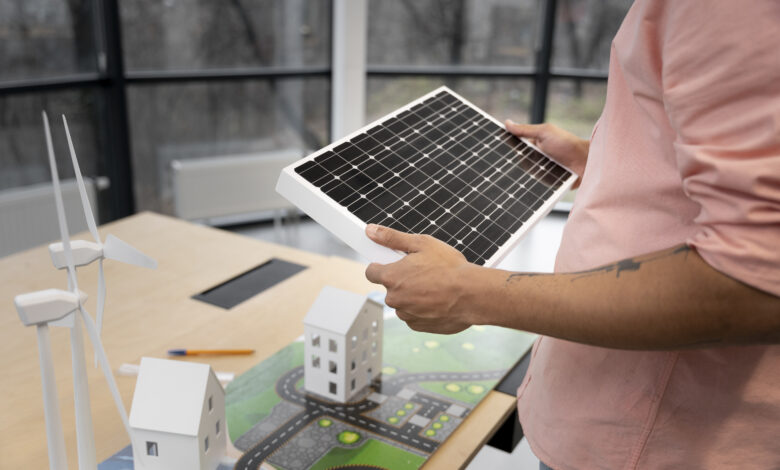How Solar Energy Supports Sustainable Urban Development

Urban development faces growing challenges as populations expand, energy demand increases, and environmental concerns intensify. Cities are now tasked with finding energy solutions that reduce emissions, manage costs, and create healthier living environments for residents. Solar energy has emerged as a central component of sustainable development strategies, providing a means to address these challenges while fostering long-term growth. By harnessing sunlight, urban areas can generate clean power locally, reducing dependence on fossil fuels and improving energy security. This transition not only helps lower carbon footprints but also supports economic and social development in growing cities. Solar energy is adaptable enough to integrate into rooftops, public buildings, and even urban infrastructure, making it highly versatile in dense environments. Its impact extends far beyond electricity generation by shaping the way communities plan for the future. For cities aiming to achieve sustainability goals, solar power is becoming a vital part of the equation.
Powering the future of cities
- Reducing urban carbon footprints
One of the most significant ways solar energy contributes to sustainable urban development is by reducing greenhouse gas emissions. Traditional power generation, particularly from coal and natural gas, remains one of the most significant sources of pollution in cities. By installing solar panels on rooftops, in commercial buildings, and at public facilities, cities can significantly reduce their reliance on fossil fuels. This shift directly reduces emissions, improves air quality, and lessens the environmental impact of urban growth. Cleaner air not only benefits the environment but also contributes to improved public health, resulting in lower rates of respiratory illness and other pollution-related health issues. Cities that adopt solar energy widely demonstrate how renewable technology can be scaled to address pressing climate goals. For those interested in learning more about North Valley Solar Power, the company provides examples of how localized solar solutions are driving environmental improvements within communities. By cutting emissions at their source, solar energy sets the foundation for healthier, more livable cities.
- Enhancing energy resilience in cities
Urban areas face unique challenges in terms of energy resilience. High demand, aging infrastructure, and extreme weather events can put pressure on city power grids, leading to outages or costly disruptions. Solar energy offers an effective way to enhance resilience by distributing generation across rooftops and community systems, rather than relying solely on centralized plants. Paired with battery storage, solar installations allow neighborhoods and businesses to maintain power during outages, reducing the impact of grid failures. This decentralized model ensures greater stability in times of crisis, giving cities a dependable backup source of electricity. As climate-related events become more frequent, energy security is becoming a priority in sustainable development plans. Solar energy answers this demand by delivering reliable, locally generated power that supports both daily needs and emergencies. With growing urban populations, resilient systems are essential to maintaining continuity in services and protecting residents from unpredictable disruptions.
- Promoting economic opportunities
Solar energy also supports sustainable urban development by driving economic growth and creating opportunities. The adoption of solar systems leads to job creation across multiple sectors, including manufacturing, installation, maintenance, and customer support. By prioritizing local hiring and training programs, cities can ensure that renewable energy investments contribute directly to their economies. Lower energy costs also create financial stability for businesses and institutions, allowing them to reinvest savings into expansion, innovation, and community services. Property owners also benefit, as solar installations often increase real estate value while making buildings more attractive to tenants seeking affordable energy solutions. Beyond individual benefits, the economic ripple effect of solar energy strengthens local commerce, reduces dependence on external fuel sources, and positions cities as leaders in sustainable innovation. As solar technology continues to evolve, its role in shaping resilient, prosperous urban economies will become increasingly significant, directly linking sustainability to economic opportunity.
- Integrating solar into urban infrastructure
Cities are uniquely positioned to integrate solar energy into infrastructure in creative ways that support sustainability. Rooftop panels on residential and commercial properties are standard, but solar is increasingly being applied to public buildings, transportation systems, and street infrastructure. Solar-powered streetlights, charging stations, and public transit facilities help reduce municipal energy costs while showcasing a city’s commitment to clean energy. These projects serve as visible reminders of how renewable energy can be incorporated into everyday urban life. In addition, architects and developers are designing solar-ready buildings that maximize efficiency and minimize energy consumption, integrating renewable solutions directly into the construction process. This integration reflects a forward-thinking approach where energy is not an afterthought but a key component of planning. The adaptability of solar energy ensures it can be scaled for both large and small projects, making it suitable for diverse urban environments. Such widespread adoption ensures that renewable energy is woven into the very fabric of city development.
Solar energy is redefining how cities approach growth by aligning development with sustainability, resilience, and economic opportunity. By reducing carbon emissions, improving energy security, and creating healthier living environments, solar power addresses some of the most pressing challenges urban areas face. Its ability to generate clean power locally lowers reliance on fossil fuels while empowering communities to prepare for future demands. Economic benefits extend beyond savings, driving job creation and supporting stronger local economies. The integration of solar into urban infrastructure demonstrates its adaptability, proving it can enhance daily life while shaping long-term planning. For cities seeking sustainable development, solar is no longer optional but an essential investment in their future. It delivers the tools to balance growth with responsibility, ensuring that urban spaces remain livable, resilient, and prosperous for generations to come. Solar energy has become a cornerstone of the sustainable city of tomorrow, blending innovation with long-term community well-being.



